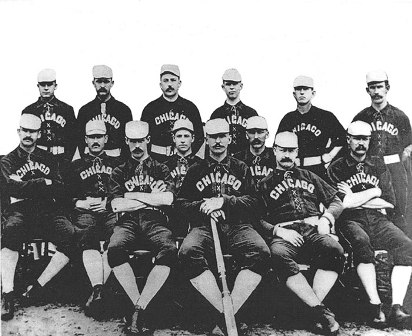By 1912, Ed Remley of The Fort Worth Star-Telegram had had enough of talk of “scientific” and “inside” baseball, which he called a “Figment of writers’ too active brains:”
“This ‘Inside baseball’ stuff and statistical dope that is being given so much space in the low-priced magazines, makes us tired. Yesterday we read a story in which an attempt was made to prove that when ‘Good Night’ (Frank) Baker came to bat against (Christy) Mathewson (in game 3 of the 1911 World Series) the chances were 367 and 2/5 to 1 against his making a home run. Once we read a story by (Hugh) Fullerton and Johnny Evers in which those gentlemen attempted to prove that there were just three places, six inches each in width, where a ground hit ball could pass safely through the infield.
“This line of bunk listens well to the public who attend all their baseball games through the newspapers—we sometimes think they are a majority of the fans—but to the close follower of the game they look like far-fetched attempts to make a story where no story is. Some of this stuff is so thin that even a schoolboy athlete will snort when he reads, but the magazine editors but it up and illustrate it with cuts borrowed from the sporting page.”
Remley said it wasn’t about baseball, but selling magazines:
“Five years ago about one baseball story in three years drifted into the covers of the big 10-cent monthlies. Now scarce an issue of any of the popular ones is without its baseball yarn of some character. It can betoken one of two things, either there is a stronger interest in baseball or else the magazine editors are just beginning to wake up and see its possibilities as a feature.
“If baseball has become a magazine subject because of a natural public demand for that species of pabulum, well and good, and the more of it the public gets the better…On the other hand, if this writing all around the subject of baseball is a result of an exaggerated view of its value on the part of the editors it is going to do the game no good, for the public will soon tire of that kind of hysteria just as it does of anything else that is boomed too much—towns, religions, etc…”
The emphasis on statistics bothered Remley more than anything:
“Meanwhile the fact remains that you can’t reduce the game to figures. Not even the most skillful statistician can make out the story of a game from the box score. The figures are an interesting commentary, sometimes, but the real story of baseball will not fit within the box.
“Analyzing the factors which go up to make a successful baseball team, the following ratio is discovered: physical fitness, 20 percent; skill, 60 percent; chance, 20 percent. That’s mere opinion, too, for the exact ratio never can be determined, but it is evident that some such ratio must obtain. It is the existence of this large percent of chance in baseball which makes it impossible to reduce the probabilities of the game to figures. By tossing a dime in the air 2000 times it will be discovered the coin will fall heads up approximately half the time. Just so, by taking a large enough number of cases generalizations may be arrived at in baseball, but when the attempt is made to apply these generalizations to concrete cases, the theory falls down. “
Remley concluded:
Baseball will never be a science, therefore, and the attempts to make it appear so are bound to be discredited sooner or later. It is about time for the magazines to can this statistical dope from their pages.”
The following year, Remley left Fort Worth and joined the staff of The Chicago Inter-Ocean. Tne Inter-Ocean and The Chicago Record-Herald were consolidated into The Chicago Herald in 1914, and Remley for a time–until his death from pneumonia in 1915–became a co-worker of Hugh Fullerton, whose “inside baseball” he so abhorred.




Leave a comment